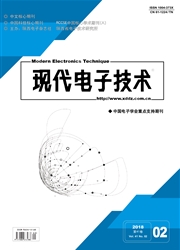

 中文摘要:
中文摘要:
近年来,随着电力电子技术与电气自动化技术的迅速发展,电磁环境日渐复杂,电子设备间的相互干扰日益严重,电磁兼容问题成为不容忽视的重要课题。为保证设备不受外界的电磁干扰,通常对设备外部加上金属屏蔽机箱,而由于需要散热、通风等因素的存在,不可避免需要在机箱上开孔开缝。外部的电磁干扰信号通过这些孔缝进入机箱内部,影响机箱正常工作。利用波导等效电路,计算了带有中心孔的矩形金属屏蔽体的屏蔽效能,并对孔的形状、矩形孔的长宽比以及入射波极化方向等参数对屏蔽效能的影响进行了讨论。另外,进一步研究了含有孔阵矩形金属机箱的屏蔽效能,并对电子机箱的电磁兼容性设计提出改进措施。最后利用Ansoft HFSS仿真软件验证模型的有效性和算法的正确性。
 英文摘要:
英文摘要:
More recently,with the rapid development of power electronics and electrical automation technology,the electromagnetic environment has become more complex and the interference between electronic equipments has been increasingly serious.Electromagnetic compatibility(EMC) has become an important issue that can not be ignored.Metallic enclosure is widely used to shield from electro-magnetic interference(EMI).Because of the needs for such various reasons as heat dissipation and ventilation panels,etc.,the holes or slots inevitably exist on the enclosure.The holes or slots are the main factors to influence the effectiveness of the system,through which EMI signal is transmitted into the enclosure.Waveguide equivalent circuit model is used to calculate the shielding effectiveness of rectangular enclosure with center hole,and the impact of such hole parameters as the shape,the ratio of length to the width for the rectangular slots,the polarization of incident electromagnetic wave,etc.are discussed in this paper.In addition,the rectangular metallic enclosure with hole arrays is further studied.The improvements for EMC design of enclosure are put forward.Finally,the efficiency of the model and accuracy of algorithms are tested and verified by Ansoft HFSS simulation software.
 同期刊论文项目
同期刊论文项目
 同项目期刊论文
同项目期刊论文
 期刊信息
期刊信息
